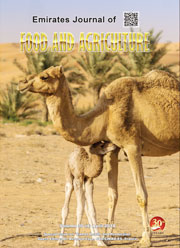Ultrasound with controlled temperature as an emerging technology for extraction of antioxidant compounds from by-products of mango (Mangifera indica L. var Ataulfo) juice
DOI:
https://doi.org/10.9755/ejfa.2023.v35.i2.3013Abstract
During the industrial processing of juice high amounts of by-products are obtained which are discarded. The objective of this study was
to optimize the conditions of ultrasound process using response surface methodology (RMS) based on antioxidant compounds extraction
(total phenolic content (TPC) and ascorbic acid (AA) and antioxidant activity (ABTS and DPPH) of mango waste and its comparison with
two conventional extraction methods (aqueous and hydroalcoholic). All response variables were fitted to the mathematical model (R2 ≥ 95).
The optimal processing conditions corresponded to 91% of amplitude with a treatment time of 7 min, reaching the highest extraction of
TPC and AA, as well as antioxidant activity. And in comparison, to conventional extraction methods (aqueous and hydroalcoholic), the
optimal ultrasound conditions had (p< 0.05) highest antioxidant content with 8800 mg GAE/100 g dry weight (dw) to total phenolic
content, 5600 mg AAE/100 g dw in ascorbic acid, 60000 and 7500 µmol TE/100 g dw for DPPH• and ABTS•+ assays, respectively.
These results demonstrate that ultrasound is an alternative method to enhance the extraction of antioxidants from mango industrial waste
which could be used as additives in food products.
Keywords: Anti-radical activity, Mango (Mangifera indica L.), Response Surface Methodology, Tropical fruit.










 .
. 